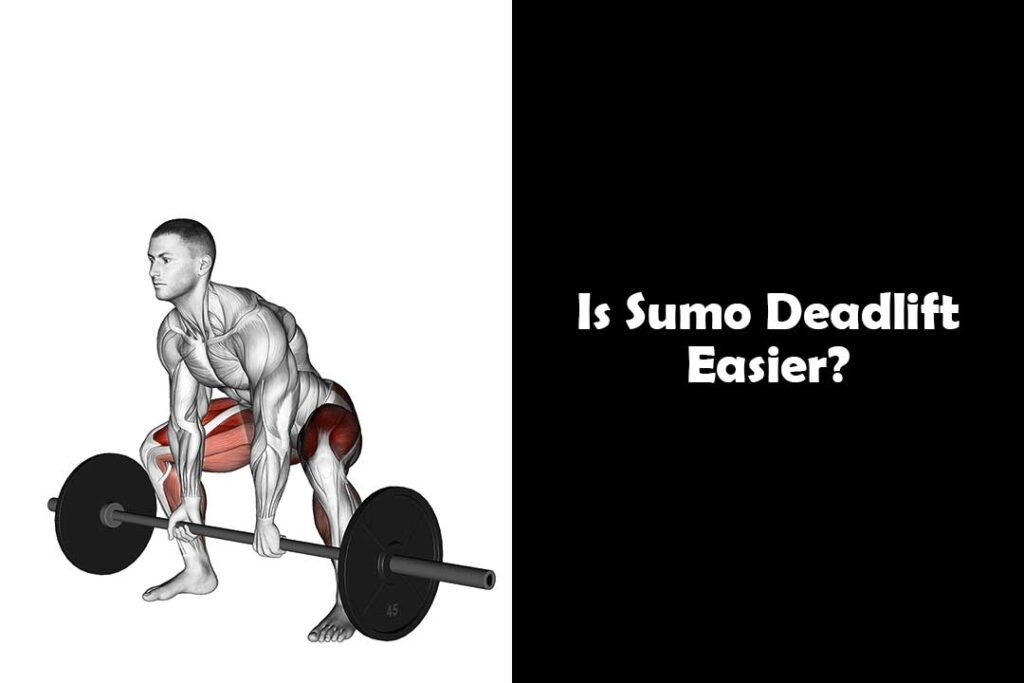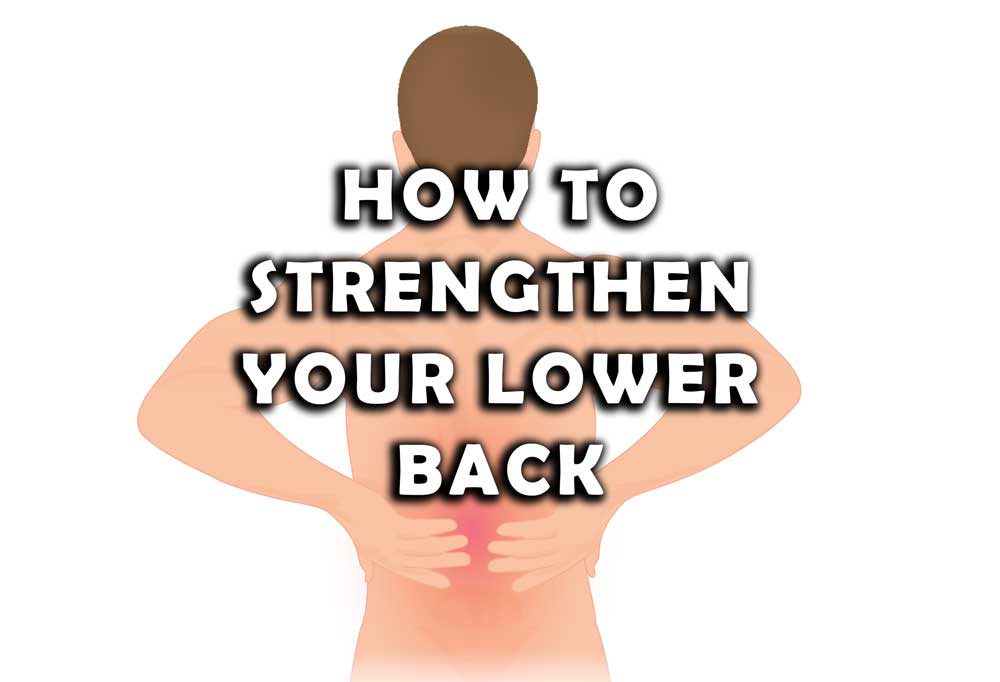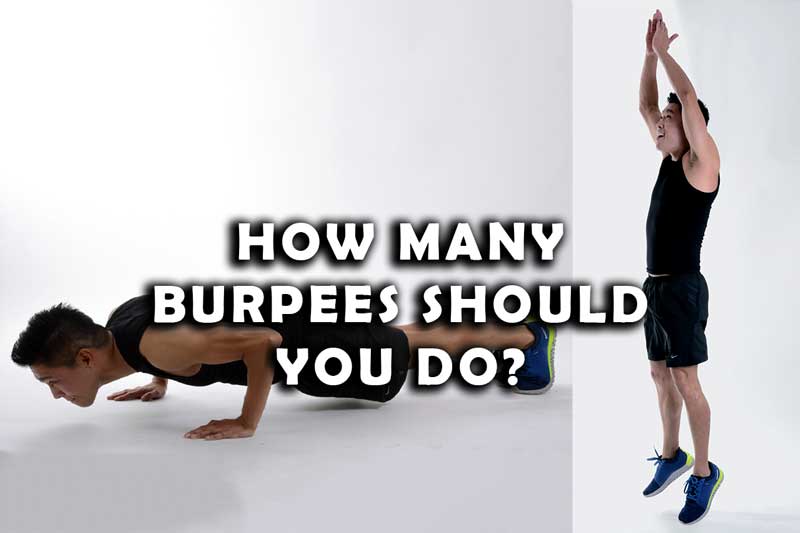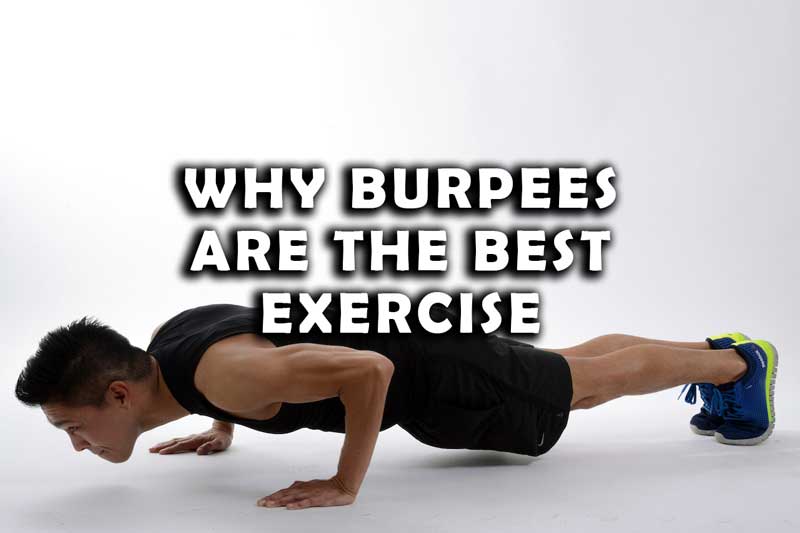Sumo deadlift and conventional deadlift are two popular variations of the deadlift exercise. Both of them are compound exercises that target multiple muscle groups. When we compare sumo deadlift with the conventional deadlift, many will say that sumo deadlift is easier. Let’s discuss more about this question ‘is sumo deadlift easier than the conventional deadlift?’.
The answer to the question is yes. Yes, it is easier because it involves less range of motion, wider standing stance which gives more stability. But is it right to compare both with each other? Of course not. We can not compare two different form of exercises. Let’s discuss in details about this in this article.
What is Sumo Deadlift?
Sumo deadlift is a deadlift variation in which the lifter adopts a wider stance with the toes pointing outwards and the hands positioned inside the legs. This stance allows the lifter to maintain a more upright torso position. This puts less stress on the lower back and more emphasis on the hips and quads. The range of motion is also shorter in the sumo deadlift, which may make it easier for some lifters to perform.
What is Conventional Deadlift?
Conventional deadlift is the classic deadlift variation in which the lifter adopts a narrower stance with the toes pointing forward and the hands positioned outside the legs. This stance requires the lifter to lean forward more. This places more stress on the lower back and hamstrings. The range of motion is also longer in the conventional deadlift, which may make it more challenging for some lifters.
You might also like: Can you deadlift with dumbbells? A comprehensive guide
Is Sumo Deadlift Easier Than Conventional Deadlift?
Yes, sumo deadlift is easier than the conventional deadlift. This is because the wider stance and hand position reduce the range of motion required to lift the bar off the ground. This reduces the range of motion and allows lifters to lift heavier weights than compared to the conventional deadlift.
However, this doesn’t necessarily mean that Sumo Deadlift is easier for everyone. Some lifters might feel that the standing stance of sumo deadlift is uncomfortable for them. This can make sumo deadlift less easy for them compared to the conventional deadlift.
Also, it is not right to compare 2 different forms of exercise with each other. Both sumo deadlift and conventional deadlift have their own unique style. Both are well established exercises. It is better to incorporate both the types of deadlifts your workout programme. It is better to compare weight lifted (PR – personal records) to the same style of exercise than to a variation of the same exercise.
Is Sumo Deadlift Cheating?
Many believe and say that sumo deadlift is cheating. Well, it is not. It is itself a different form of exercise and should be performed by fitness enthusiasts.
It does feel not as natural as conventional deadlift but it is supposed to be felt like it. The stance and form of the exercise has been made so to target slightly different muscles that conventional deadlift cannot as effectively.
It can be considered cheating only if a person does a sumo deadlift and mentions it as doing deadlift. As sumo deadlift is easier than conventional deadlift, it is not right to perform a sumo deadlift and bragging it as conventional deadlift.
Differences and Benefits
| Aspect | Conventional Deadlift | Sumo Deadlift |
|---|---|---|
| Stance | Wider stance, feet typically hip-width | Much wider stance, toes pointed out |
| Grip | Hands placed outside the knees | Hands inside the knees, narrower grip |
| Muscles Emphasized | More emphasis on lower back and hamstrings | Greater focus on quads and glutes |
| Range of Motion | Longer range of motion | Shorter range of motion |
| Spinal Stress | Greater stress on the lower back | Reduced stress on the lower back |
| Leverage | More reliance on back strength | More reliance on leg strength |
| Quad Engagement | Less engagement of quads | Higher engagement of quads |
Muscle activation: Sumo deadlift emphasizes the hips, quads, and adductors (inner thighs) more than the conventional deadlift. The conventional deadlift emphasizes the lower back, hamstrings, and glutes more than the sumo deadlift.
Stance and grip: Sumo deadlift allows for a wider stance and a narrower grip. This may be more comfortable for some lifters and reduce the distance of the bar to be lifted. The conventional deadlift requires a narrower stance and a wider grip. This may feel more stable for some lifters and may require a stronger grip.
Range of motion: Sumo deadlift has a shorter range of motion. This may make it easier for some lifters to perform but may also limit the amount of strength and mobility needed to perform the lift. The conventional deadlift has a longer range of motion. This may make it more challenging but also may increase the strength and mobility demands of the exercise.
Injury risk: Sumo deadlift are less stressful on the lower back for some lifters due to the more upright torso position. While the conventional deadlift may place more stress on the lower back and hamstrings. However, both variations can be safe and effective if performed with proper form and technique.
Specificity: The choice between sumo deadlift and conventional deadlift may also depend on the lifter’s specific goals and needs. For example, sumo deadlift may be more beneficial for powerlifting competition because it allows for a wider stance and shorter range of motion, while conventional deadlift may be more beneficial for developing overall strength and muscle mass due to its greater range of motion and muscle activation.
Sumo Deadlift or Conventional Deadlift: Which is Right for You?
Both are great compound exercises. The choice between sumo deadlift and conventional deadlift ultimately depends on your individual preferences, goals, and needs.
If you have a history of lower back pain or prefer a wider stance, you may benefit more from sumo deadlift.
If you want to develop overall strength and muscle mass, or prefer a narrower stance, you may benefit more from conventional deadlift.
It’s important to try both variations and experiment with different stances and grips to find.
Common Mistakes to Avoid
Sumo deadlift being easier does comes with risk of injury if not performed correctly.
Regardless of which variation you choose, there are some common mistakes you should avoid to ensure proper form and technique:
Rounding the back: This can put excessive stress on the lower back and increase the risk of injury. Keep your back straight and engage your core throughout the lift.
Lifting with the arms: The deadlift is a lower body exercise, and the arms should only be used to grip the bar. Avoid pulling the bar with your arms or shoulders.
Lifting too heavy: It’s important to start with a weight that you can lift with proper form and technique. Gradually increase the weight as you become more comfortable and confident with the lift.
Neglecting warm-up and cool-down: Deadlift is a demanding exercise that requires a proper warm-up and cool-down to avoid injury and improve performance.
Conclusion
In short, the answer to the question ‘Is sumo deadlift easier than the conventional deadlift?’ is yes. Yes, it is easier but not wrong.
In summary, the sumo deadlift and conventional deadlift are two popular variations of the deadlift exercise that offer different benefits and challenges. The choice between sumo deadlift and conventional deadlift ultimately depends on your individual preferences, goals, and needs. Experiment with both variations and find the one that works best for your body.
FAQs
1) Can sumo deadlift replace conventional deadlift?
No, both variations offer different benefits and challenges, and it’s important to incorporate both into your training program to effectively target all muscles.
2) Is sumo deadlift better for taller lifters?
Not necessarily. While the sumo deadlift may be more comfortable for taller lifters due to the wider stance, it ultimately depends on the individual’s body proportions and preferences.
3) Can sumo deadlift help with lower back pain?
It can be easier on lower back but it is a form of exercise and like all exercise It can cause injury if not performed properly. It’s important to consult with a healthcare professional before starting any exercise program.
4) Should I use a lifting belt for sumo deadlift
Using a lifting belt is a personal choice and depends on your individual preferences and needs. A lifting belt can provide extra support for your lower back and core, but it’s important to use it correctly and not rely on it too heavily.
5) Is sumo deadlift easier for beginners?
It is is easier than conventional deadlift no matter you are a beginner or not. But it is better to practise both forms of exercise.
6) Can sumo deadlift help with building muscle?
Yes, it can help build muscle in the lower body, including the glutes, hamstrings, and quads. It can also engage the upper back and core muscles.
7) Should I do sumo deadlift or conventional deadlift for powerlifting?
It ultimately depends on your individual strengths and weaknesses, as well as the rules and regulations of the powerlifting competition. Some powerlifters may prefer this for its wider stance and shorter range of motion, while others may stick with conventional deadlift for its greater emphasis on overall strength. It is better to practise both.
8) Can sumo deadlift improve my squat?
Yes, sumo deadlift can help improve your squat by strengthening the same muscle groups, including the glutes, hamstrings, and quads. It can also improve your hip mobility and stability, which are important for proper squat form.
9 )Can sumo deadlift cause knee pain?
Like any exercise, sumo deadlift can cause knee pain if performed with improper form or if you have an underlying knee condition. It’s important to consult with a healthcare professional if you experience knee pain during or after the lift.





